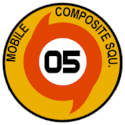FITNESS SAFETY
Fitness Safety
No matter the activity, safety should be the first consideration. Here are some tips on being safe during physical fitness activities whether at CAP or elsewhere.
-
STAY HYDRATED. This is important each and every day, regardless of level of activity. This is vitally important and can effect multiple aspects and functional capabilities of the body. For more information, visit the Fitness Hydration page.
-
WEAR APPROPRIATE CLOTHING. It is important that cadets make sure to wear clothes appropriate for both the activity and the weather. We have uniforms in CAP that help ensure cadets are dressed appropriately for planned activities. However, many of our uniform combinations do not have mandatory items for weather specific conditions. In addition to the "Uniform of the Day" (UOD), make sure to wear coats, gloves, hats or other items appropriate to address current weather conditions. If you have any questions, reach out to your Cadet Leadership.
-
WEAR APPROPRIATE FOOTWEAR. There are many types of boots that can go with your ABUs and athletic shoes that can be worn with PT uniforms. Take the time to make sure you are getting the best shoe you can to support your feet. - The height of boots shall be 8 to 12" from the bottom of the heel to the top edge of the boot. This will help protect the ankle when traversing terrain. It also must have a leather toe and heel that can be polished. We also advise against zipper boots. - Athletic shoes should be RUNNING shoes that properly support the foot during endurance-based activities. Consideration should be given to shape of foot (wide or narrow toe-box, wide or narrow heel), and need for arch support or support that addresses pronation (foot turning or dropping to the inside of the arch) or supination (foot rolls to the outside edge of the foot and is much more prone to ankle injury) issues. Even if you haven't outgrown your shoes, replace them when they become worn out and are no longer protective or supportive to the foot. It is worth the money to ensure you are properly supporting your feet, no matter who you are and what activity you are doing. - ALL SHOES SHOULD FIT PROPERLY TO AVOID INJURY.
-
SAFETY EQUIPMENT. This will be specific to the activity and can include reflective belts or vests, eye protection, etc.
-
WARM UP. Take a few moments to do some light cardiovascular activities: a brief jog, jumping jacks, etc.
-
STRETCH OUT. Before exercising, make sure you perform appropriate pre-activity "DYNAMIC" stretching. After exercising, make sure you perform appropriate post-activity "STATIC" stretching. Don't know the difference? Visit the Fitness Stretching page.
-
INSPECT EQUIPMENT. If you are using equipment, take a moment to inspect it to ensure it will work properly and not be a possible cause for injury.
-
BE KNOWLEDGEABLE. If you are trying something new, take the time to make sure you know what you are doing. New activities, new equipment, proper posture, proper technique... all these things and more are important to get the most out of the activity while minimizing the possibility of injury.
-
REPORT POSSIBLE INJURIES. Even if you don't think you're hurt, still let someone know something happened.




